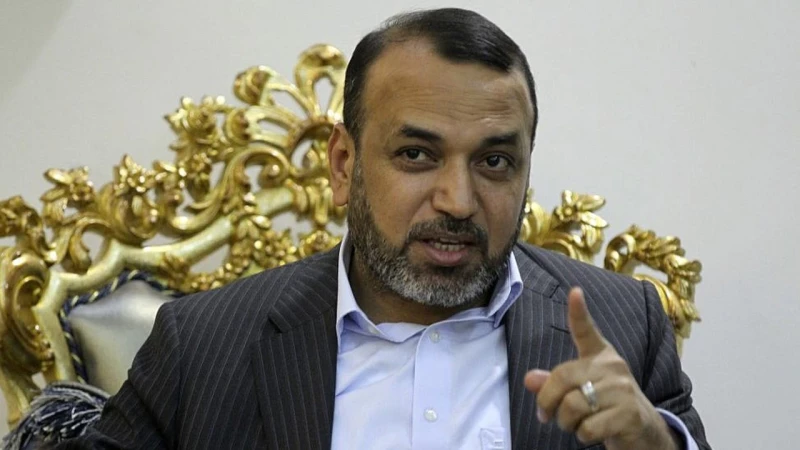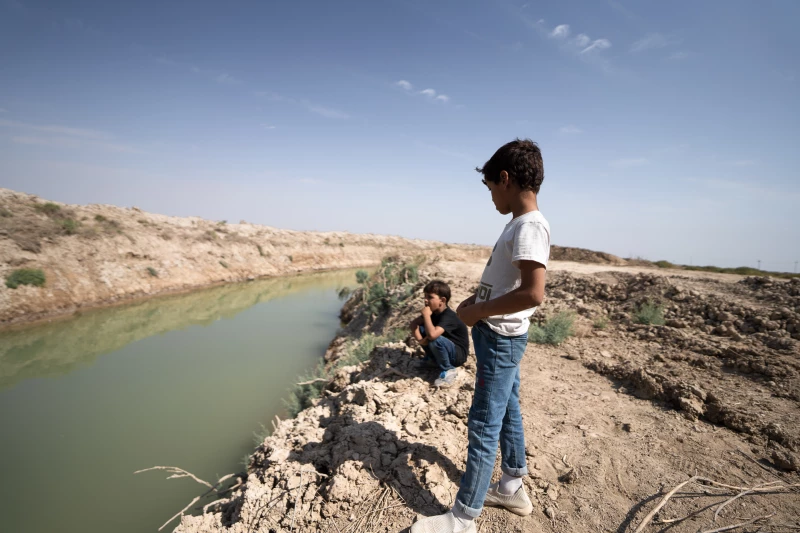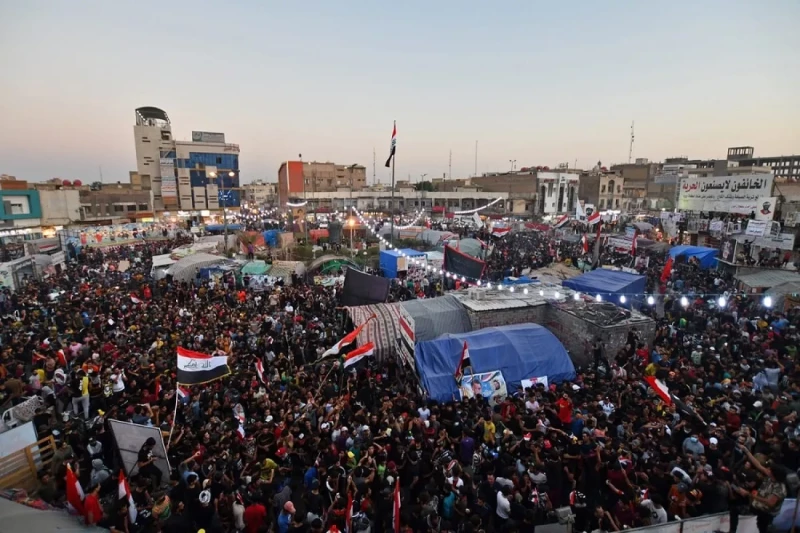BAGHDAD – A biology teacher working in a school south of the Iraqi capital said he had converted a classroom into a biology laboratory using his own funds even after going for years without a salary.
“I did not expect anything good from the government, so I took the initiative at my own expense,” the teacher, Yousef Riyad, told The New Region in a Nov. 6 interview.
The teacher, Yousef Riyad, who works in a school a southern district of the Baghdad governorate, said that he had been teaching without pay for nearly five years prior to receiving a small amount intermittently to cover his transportation costs last year.
Only in January, he said, was he finally given a permanent position at a school as well as a regular salary.
Many in the profession complain of going for months or years without pay or having to use their own money to ensure students have a safe and comfortable space to learn in.
‘Schools understaffed, teachers unprepared’
According to an April 2022 report issued by the Norwegian Refugee Council on the basis of research conducted over a period of several months across Iraq, “government processes for the recruitment and training of teachers largely stalled after 2014.”
“Limited teacher recruitment has a highly negative impact on children’s education, as schools are understaffed. At the same time, existing staff are often unprepared, due to the lack of trainings. Teachers who are ‘hired’ are typically in temporary and un-paid roles, which is a key reason for their dissatisfaction. Available training is mainly provided by” international non-governmental organisations (INGOS) and the UN, it added.
In Iraq’s northwestern Nineveh governorate, the report noted, there is only one teacher for every 57 students, “which greatly impacts the quality of learning”. 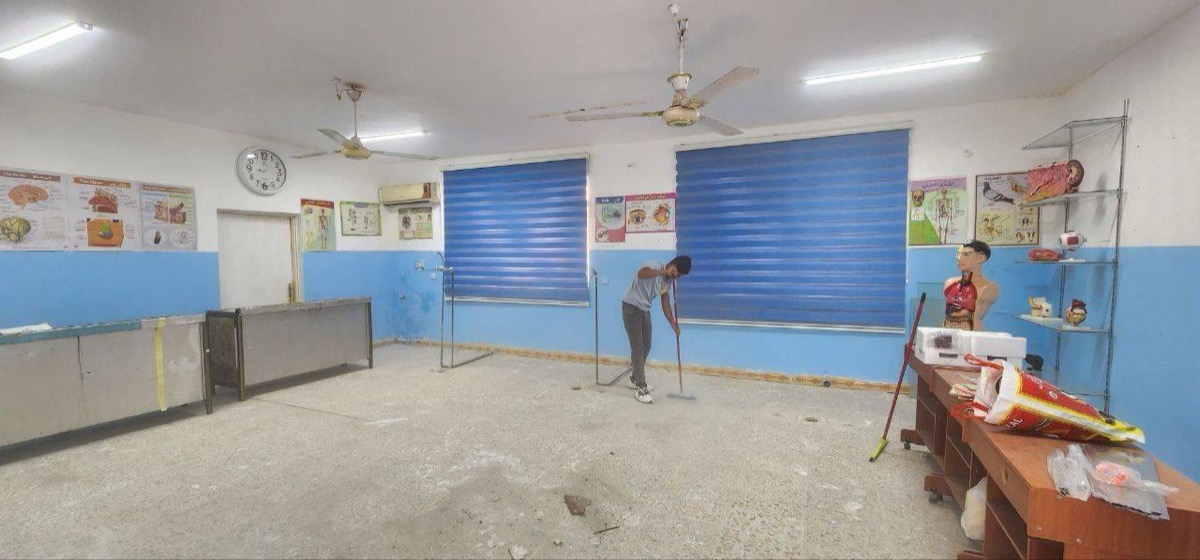
Teachers moonlight to pay their rent
Riyad noted that he is still working as an editor with a satellite television channel, even after getting a position at the school.
It was through his work in the field of journalism that he was able to pay his basic living expenses and then, once he was granted a permanent position, those of creating a better environment for his students to learn in.
The school, he said, did not have single laboratory prior to his initiative.
Riyad started out fixing and repainting the walls of the classroom with the help of some of his middle school students as well as improving the lighting and bringing in ceiling fans.
Then, he bought three-dimensional models of body parts such as the heart, as well as a microscope and posters illustrating medical concepts.
Riyad prepared an interactive whiteboard with an educational program for students containing a large video library in addition to a 3D library with 3D details of the human body.
About 180 students in fourth-grade science classes and 180 in fifth-grade science classes as well as 210 students in the sixth grade of middle school now receive biology lessons in the laboratory Riyad created.
Parents chip in while wondering ‘where government funds go’
The teacher stressed he had found students much more enthusiastic than before and that they are now interacting more than before, leading to more effective and enjoyable learning.
He said that he would like to see all Iraq schools with laboratories and that he had had to ignore many colleagues that said he should use his money for his own needs.
Riyad lashed out at those he said use education simply to further electoral aims and who then forget about the suffering sector as soon as they are elected into government positions.
One teacher in Iraq’s southern port city Basra also helped renovate one of the classrooms in the school she teaches in, as did others in other schools in Baghdad, according to photos and videos posted on social media.
Parents also regularly play a role in renovating classrooms and donating money to do so.
Ali Sadiq, father of two middle school students, told The New Region: “For the third year in a row, I gave my children some money after the school administration asked for it in order to buy curtains and paint the classrooms.”
Sadiq also criticized the government, asking “where do budget allocations go if teachers and students are the ones rehabilitating the schools?”
Sadiq went on to say that parents must buy books from the market due to a lack in schools. Many also invest in private tutoring to ensure their children get a proper education, he noted.
According to reports published by Iraq’s ministry of education and ministry of higher education, government spending on education ranged between an estimated 4% and 8% of the country’s GDP annually from 2003 to 2021.
Various attempts have been made to raise funds for the sector including through a law enacted in 2019 through which 1,000 Iraqi dinars was added to the official stamp duty as part of what was called the National Campaign to Build Schools and Kindergartens.
Whose burden and at what cost?
A researcher focused on economic affairs, Safwan Qusay, said that the process of maintaining and rehabilitating school buildings is primarily a duty of the education ministry but that the practice of rehabilitating classrooms by teachers and students was a form of “social solidarity”.
“The role of parent-teacher councils is very important in spreading awareness about preserving public property,” Qusay added in speaking to The New Region.
However, he stressed, “this should not put a burden on the shoulders of students’ parents” as it currently does.
Qusay opined that “Iraq needs approximately 10,000 schools” at present.
Iraq needs more than 8,000 schools, officials admit
Iraq signed agreements with two Chinese companies in late 2021 to build 1,000 schools within two years. Housing ministry official Hassan Mejaham said at that time that Iraq would pay for the project using oil products.
"Decades of conflict and under-investment in Iraq have destroyed what used to be the best education system in the region," UNICEF said on its website that year, adding that "one in every two schools is damaged and needs rehabilitation".
"There are close to 3.2 million school-aged Iraqi children out of school", it added, in a country of over 40 million people.
A total of 8,000 schools are expected be built in the three phases of the project.
General Secretariat of the Council of Ministers spokesman Haider Majeed told The New Region in November that “no school that is part of the project is up and running yet”.
However, the first phase in which 1,000 schools are planned has started.
Majeed added that plots of land for the project had been set aside in Iraq’s governorates in line with criteria set by the committee in charge, which looked at the population of the governorate, how many shifts existing schools currently have, and the type of structures that house the classrooms, including caravans.
Some schools built for a maximum of 200 students currently serve 600.
Ministry of Education spokesman Karim Al-Sayyed meanwhile noted to The New Region that “we need more than 8,000 schools, but that projects have been completed within the Chinese contract”.
He added that 2023 has been “the year of building schools, as the ministry completed 400 and there are 300 more in the process of being completed.”
Ministry of Planning spokesman Abdul Zahra Al-Hindawi told The New Region that there had been 9,115 schools in Iraq in 2003, which had risen to 18,393 in 2021.
Regarding what has been called a “curriculum crisis,” Sayyid claimed that various pending issues would soon be solved and that the ministry had begun distributing textbooks in addition to using curricula electronically to “prevent some people from exploiting the situation”.
Those working in the sector say that persistent problems in terms of printing school textbooks is due to multiple causes including many amendments to the curricula every year, a lack of funds, and political disputes.

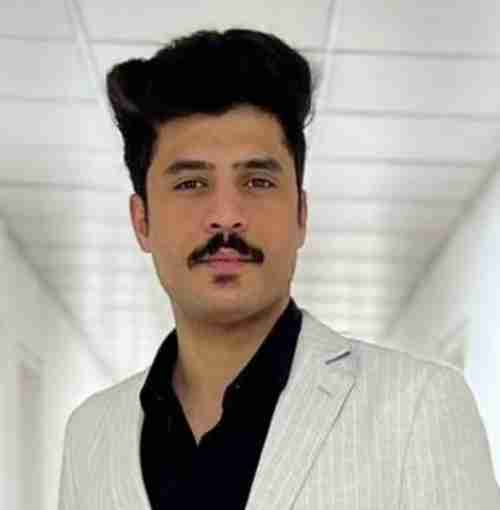

 Facebook
Facebook
 LinkedIn
LinkedIn
 Telegram
Telegram
 X
X
